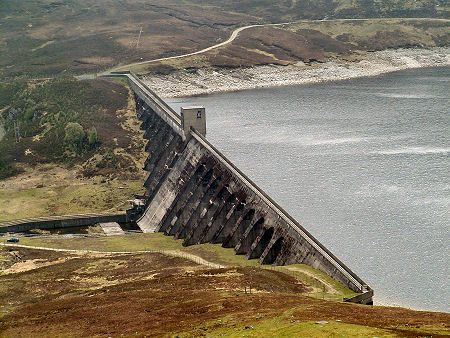 Power from the Glens... |
Thomas Johnston, or "Tom Johnston" lived from 2 November 1881 to 5 September 1965. He was a socialist and member of the Labour Party, with a political career that culminated in the post of Secretary of State for Scotland from 1941 to 1945. He is best remembered, however, for his role in driving ahead a number of large hydro-electricity schemes across the Highlands. The wider picture in Scotland at the time is set out in our Historical Timeline.
Tom Johnston was born in Kirkintilloch and educated at Lenzie Academy before going on to Glasgow University. Here he first became involved in politics when he campaigned for Keir Hardie, the first leader of the Labour Party, to be made the Rector of the University. In 1906 he helped launch the socialist paper, Forward, and he later became associated with the "Red Clydesiders".
He went on to become the Labour Member of Parliament for Stirling and Clackmannan West from 1922 to 1924, 1929 to 1931 and 1935 to 1945 and MP for Dundee from 1924 to 1929. He was first appointed to Government as the Lord Privy Seal in 1931, before serving as Secretary of State for Scotland in Winston Churchill's Government from February 1941 to May 1945.
Johnston had long been a supporter of limited devolution and, with Churchill largely occupied running the war, he was given a fairly free hand in Scotland. During the war Johnston worked to counter the influence of the Scottish nationalists by devolving some of the UK's powers to a Scottish Council of State and a Scottish Council of Industry. But his most enduring resulted from his formation of the North of Scotland Hydro-Electric Board in 1943. At the time, only a tiny proportion of people living in the Highlands has mains electricity: below 1% outside the main settlements. The role of the NSHEB was to harness the vast potential for hydro-electric power in the Highlands, partly for the direct benefit of residents, but also to provide power for energy-hungry industries like aluminium smelting and to help safeguard the energy supplies of the UK more widely.
After Johnston left the Government in 1945, he became Chairman of the NSHEB and oversaw the development of a series of large hydro schemes across the Highlands in a process that became known as "power from the glens". By the time he retired in 1959, around 90% of residents of the Highlands has a mains electricity supply ad the area's industrial base had been transformed.
At different times Tom Johnston also served as Chairman of bodies such as the Scottish Tourist Board and the Forestry Commission, and he was a Governor of the BBC. He died at his home in Milngavie in 1965, having had a more positive effect on the lives and prospects of ordinary Highlanders than anyone since Thomas Telford, 150 years earlier.
